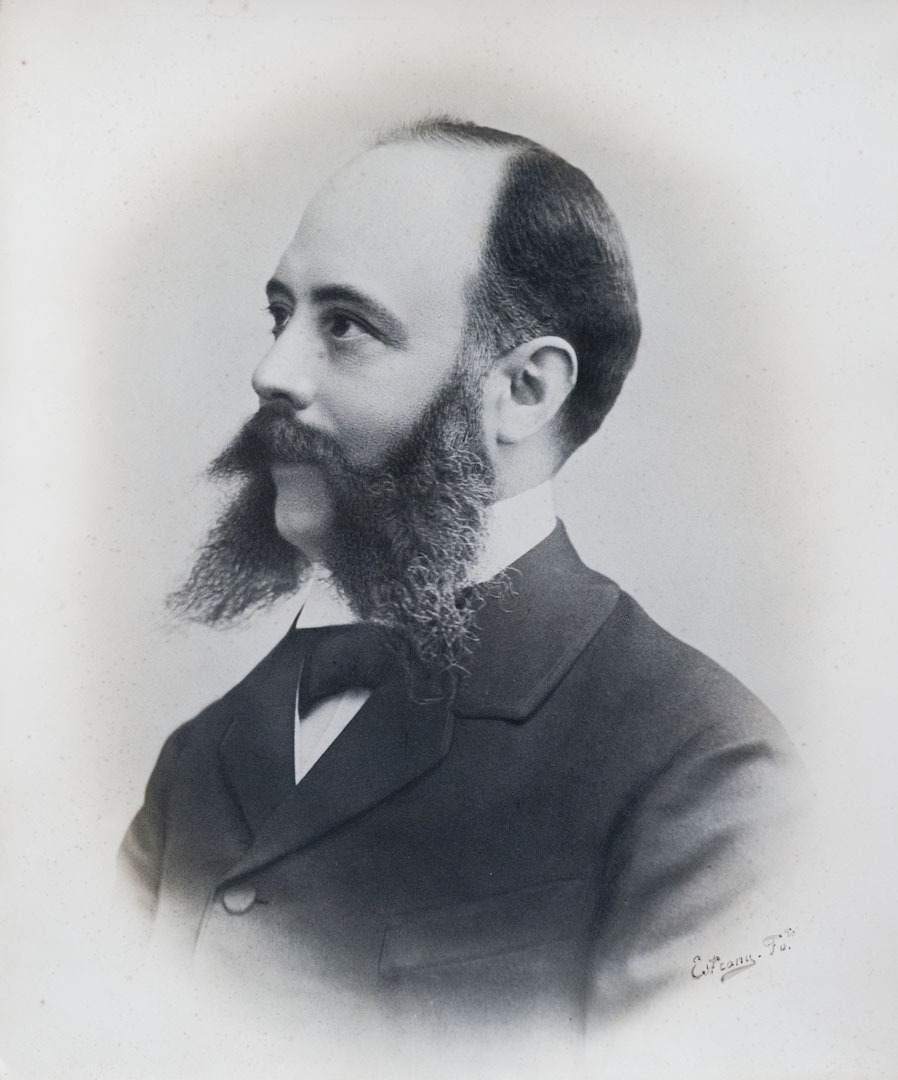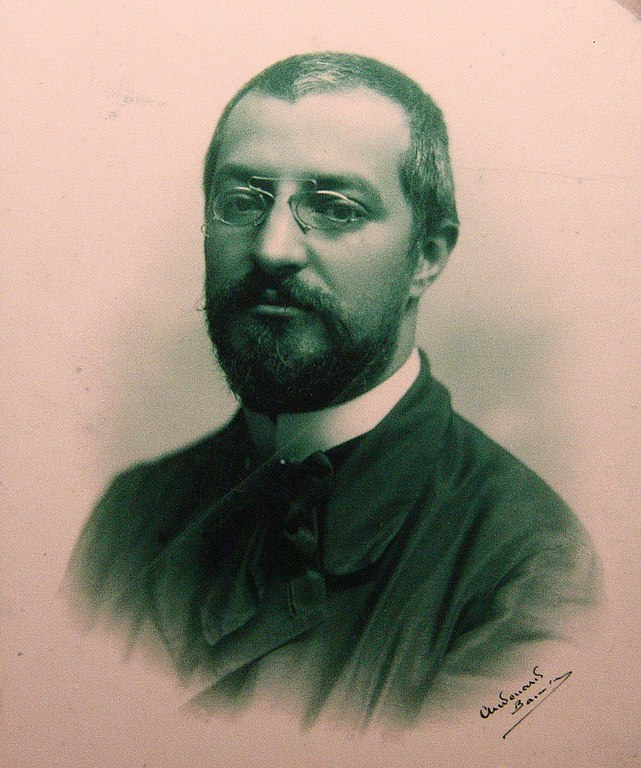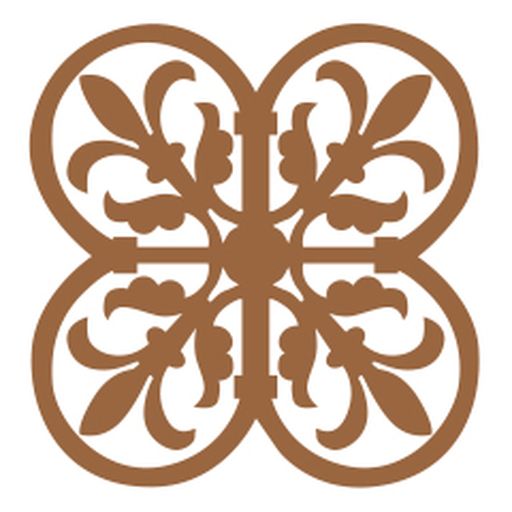On May 12, 1897, Pere Comas, a mason, a resident of Mataró, requested permission from the Municipality of Mataró to completely renovate houses no. 55 and 57 of the street of Argentona, the two houses that Joaquim Coll i Regàs had acquired the previous year. Everything and the text of the license application, the work consisted of the demolition of the two existing houses and the construction of a new building, as is expressly noted in the project plans that accompany the request for the building permit.
Curiously, these plans of the project are signed by the architect Antoni Gallissà (Barcelona, 1861-1903). The reason is not known, although perhaps it could be related to the recent past of Puig i Cadafalch as municipal architect of Mataró (1892-1896). Everything and this, the authorship of Puig i Cadafalch as designer of the work has always been manifested, and is confirmed in the monograph La oeuvre de Puig i Cadafalch published in 1904 in Barcelona, which includes the totality of the architect’s work from the beginning of his work until the year 1904 already mentioned.
The project includes a four-story building, basement, ground floor, first floor and attic, all built again. The plans of the project include the façade, an outline of the section and the ground and floor floors; neither the basement floor nor the floor of the attic are listed.
The planning followed the tradition of the casales of the urban bourgeoisie of Mataró, and in this sense is the only casal built to the city in modernist times.








JOAQUIM COLL I REGÀS
He was born in Mataró in 1855. His father and his grandfather Coll were tailors. The maternal grandfather Feliciano Regàs was a manufacturer.
Joaquim Coll i Regàs continued the business of his grandfather and his maternal uncles who, at the same time, was the successor of the company created at the beginning of the 19th century by the engineer Antoni Regàs i Borrell (Mataró, 1752-1837), who invented a machine spinning. The company started in Calle de Molas 9, then went to Plaza de Cuba, on the corner of Calle de la Unión, and later moved to new buildings on Calle de la Merced, currently
Calle Real, next to Recoder Avenue, which also had a body built on the street of Churruca. The Coll i Regàs factory had the commercial name of Sobrino de Antonio Regàs.
In 1880, Joaquim Coll i Regàs married in the church of Sant Josep with Magdalena Surià i Prados. Between 1882 and 1889, the couple had six children.
And he decided to build a family home. For that reason, in 1896 he bought two houses in the street of Argentona and immediately built his own new plant according to the project written by the architect Josep Puig i Cadafalch, which was completed in 1898.
When the Coll family was installed in the new house, they did not have much luck. First the mother died and Joaquim Coll married in second nuptials with Dolors Jaumandreu i Frigola. And very soon, in 1903, he was affected by a mental illness that disabled him. He died in Barcelona in 1904.

JOSEP PUIG I CADAFALCH
He began working as an architect in both Mataró and Barcelona. He was municipal architect of Mataró between 1892 and 1896. As a municipal architect he took care of the urbanization of many streets and modified, modernized and expanded the sewer network, many of which are today, more than a hundred years later, in perfect condition of use and maintenance. With the doctor Viladevall had written the report Memory on the sanitary state of the city of Mataró, in which it was demonstrated that the bad state, or the non-existence of sewers, was the cause of the many health problems of Mataró. It reformed the Hall of Sessions of the City council and completed its roofing. He executed the Rengle building of the Gran plaza stops, designed by his predecessor the architect Emili Cabañas, designing a new roof. Build the building of the Beneficence of the street of Sant Josep.
At the same time, he designed and executed several works of private initiative. The first, the Sisternes House (1891), in the street of Sant Simó, corner with the Espenyes. Also the store of Can Palomer or La Confianza (1894), in Plaza Xica, and Casa Parera (1894) in Calle Nou.
In Mataró, after having left the position of municipal architect, he will design the Casa Coll i Regàs (1898) in Calle de Argentona. And in Argentona his own house (1897-1905), can Garí del Cros (1897) and the chapel of the Sacrament of the parish church of Sant Julià.
During the time he worked in Mataró, he participated in all the cultural and artistic companies of the city. He collaborated in the foundation of the municipal public library. He was a founding member of the Archaeological Artistic Association and designed the banner that the association offered to the monastery of Ripoll when the restoration. He took care of the installation of the first Museum of Mataró located on the ground floor of the disappeared building of the School of Arts and Crafts.
He also worked intensely in Barcelona. In 1892, he designed the Macià Jewelery store, on Carrer de Ferran, his first work in Barcelona, now defunct. And he built many emblematic houses to the new Barcelona extension, the Casa Amatller (1900) in Passeig de Gràcia, the Macaya House (1904), today the cultural center of La Caixa, in the Paseo de San Juan, the Trinxet House (1904), disappeared, in the street of Corsica, the House of the Pinchas (1905) to the Diagonal avenue, the Sierra House (1907) to the Rambla de Catalunya, now hers of the Diputación de Barcelona. And also the House of the Quatre Gats (1897), in the street of Montsió, and the Cross of the fifth mystery of pain of the Monumental Rosary of Montserrat, with the collaboration of the sculptor Josep Llimona. In 1913 he built the Casarramona factory in Montjuic, now the headquarters of the cultural work of La Caixa.
Puig i Cadafalch died in Barcelona on December 22, 1956, at eighty-nine. By his own will he was buried in Mataró, on Christmas morning, in the family niche of the cemetery of the Caputxins.


